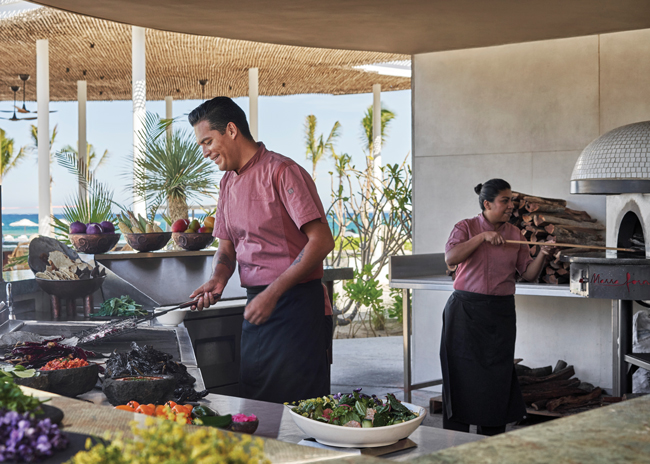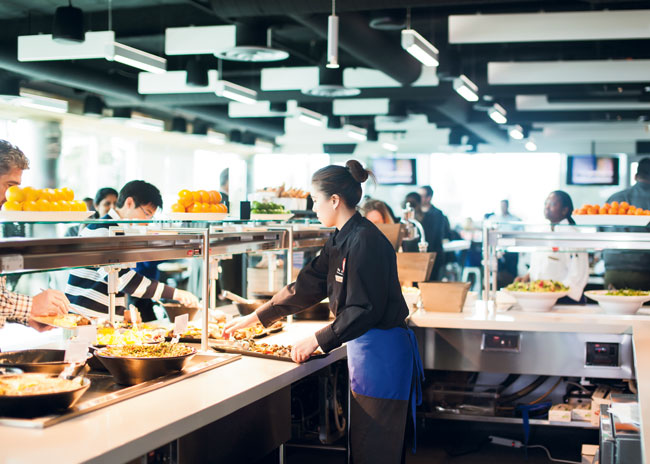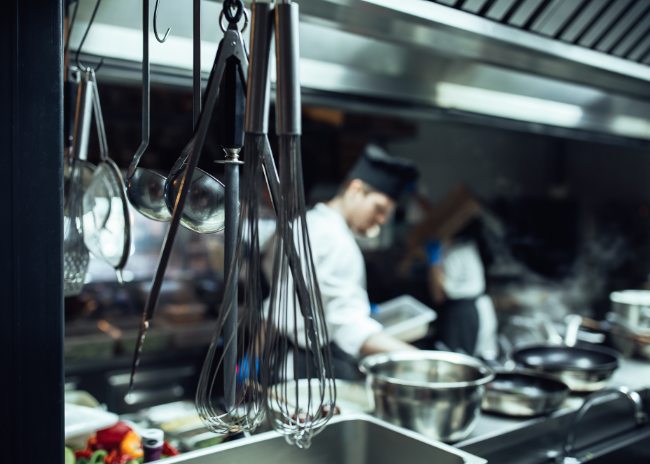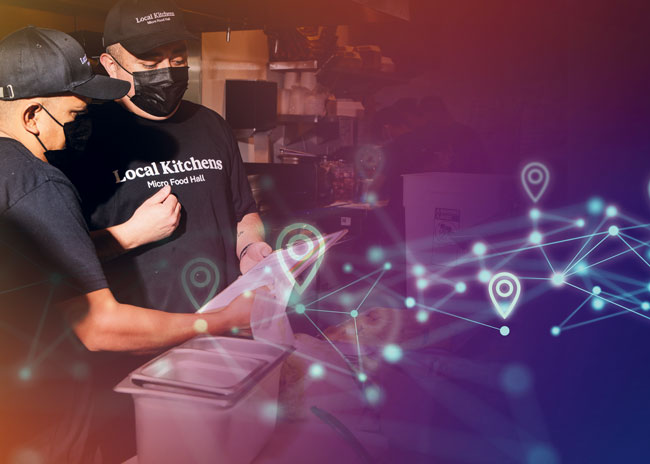Next-level mocktails continue to evolve as bartenders look for ways to elevate them.
Reading about trends always ushers in a sense of excitement and anticipation about potential change, growth and innovation on the horizon. Changes in how chefs, culinarians, restaurateurs and foodservice operators develop their menus can have a significant impact on the equipment choices and design details needed to support them.
By now, you might have spotted a coffee robot slinging lattes at an airport. Maybe you’ve ordered a fresh salad from a vending machine. Or perhaps you’ve heard people talking about seeing these mechanisms on college campuses or even in hospitals.
Outdoor commercial kitchens can be profit centers, although they don’t come without numerous hurdles.
Finding ways to add or enhance foodservice offerings without stretching an operator’s already-thin labor pool represents a challenge that spans most segments.
Talk to any foodservice designer right now and you’ll hear them talk about the same ongoing challenge: dealing with lingering supply chain issues caused by the pandemic.
Design and equipment choices support speed and efficiency.
Since the pandemic, takeout orders have been skyrocketing in the restaurant industry. This includes not just quick-service operations but also fast casual and even fine dining. And, of late a growing number of noncommercial operators, like healthcare, college and even corporate foodservice, allow customers to order ahead and pick up their food.
The restaurant industry is full of stories that include someone taking a job in their teens not realizing they were about to embark on a lifelong career and professional love affair. Such is the case with Meghan Lee, owner of Heirloom restaurant, a farm-to-table concept, set in Lewes, Del.
Five concepts show that remarkable operators can make it through the toughest challenges thanks to a focus on what makes them stand out and a willingness to adapt when the situation demands it.
The word “immunity” has grown on menus by 37% in the last year, according to Chicago-based Datassential’s “New Foundations in Health” report. Fast-casual restaurant menus most commonly reference the term “immunity boosters,” and operators mainly use these ingredients in juices and bowls.
Taking a brief hiatus during the pandemic, self-serve hot bars are coming back with design tweaks geared for more hygienic use.
Emergency service calls are a simple fact of life for operators. That doesn’t mean they’re always simple. From the managers to the line cooks, an operator’s team can take a number of steps to help these calls go as smoothly and affordably as possible.
Shifting demographics, ingredient challenges and pricing impact fine-dining restaurants.
Two areas of concern: supply chain issues and labor shortages.
Road-tested strategies for last-mile success.




















